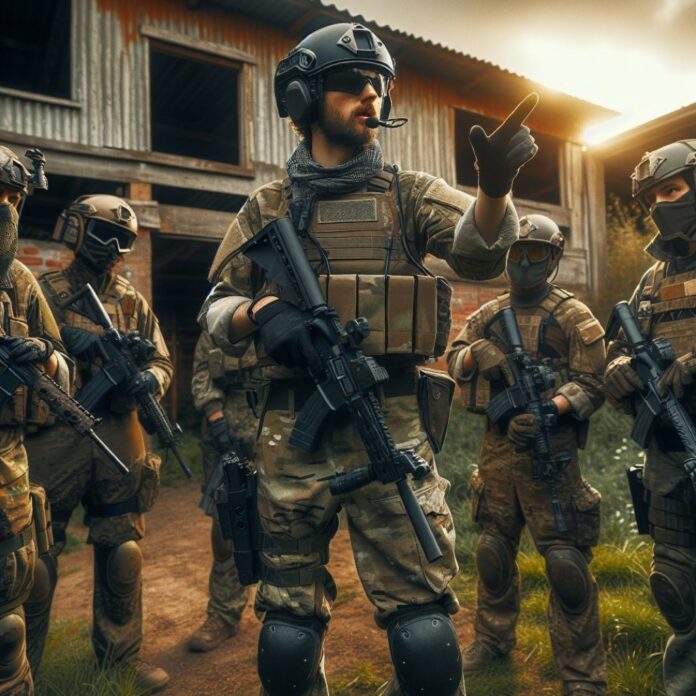Planning an airsoft game requires careful preparation and attention to detail to ensure a safe and enjoyable experience for all participants.
Whether you are a seasoned airsoft enthusiast, or a beginner looking to organize your first game, understanding the basics and following a systematic approach is crucial.
Understanding the Basics of Airsoft
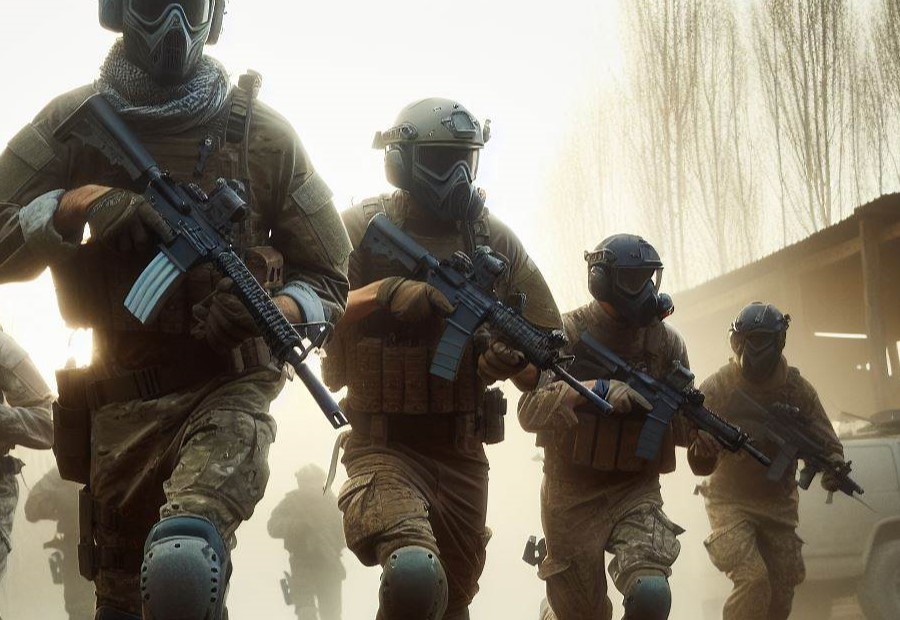
Airsoft is a recreational activity that involves simulated military combat using replica guns. Understanding the basics of airsoft is vital for a successful game. Active participation is crucial to fully enjoy the game.
The objective is to eliminate opponents by shooting them with BB pellets. Safety is of utmost importance, and players should always wear protective gear such as masks and goggles.
Communication and teamwork play a vital role in developing effective strategies. It is essential to familiarize yourself with the various types of airsoft guns, including spring-powered, gas-powered, or electric-powered ones.
Having knowledge about their range and accuracy will assist you in planning your moves accordingly. Mastering the proper handling of your gun is vital to prevent misfires and malfunctions.
Lastly, understanding the rules and regulations of airsoft games is necessary to ensure fair play and create a positive experience for all participants.
By grasping the fundamentals of airsoft, you can fully relish the excitement and challenge that this thrilling recreational activity offers.
What is Airsoft?
Airsoft is an exciting and immersive recreational activity that simulates military combat using replica firearms that shoot non-lethal plastic pellets. It is a competitive sport that is played by individuals or teams in designated fields or indoor arenas.
The objective of airsoft is to eliminate opponents by successfully hitting them with these pellets while following strict safety rules and guidelines.
In airsoft, players use realistic-looking guns that resemble actual firearms, such as rifles, pistols, and shotguns. These guns are powered by compressed gas, batteries, or springs.
Protective gear, such as goggles, face masks, and body armor, is crucial to ensure the safety of participants and prevent injuries.
Airsoft games can vary in format and objectives, ranging from capturing flags to rescuing hostages or completing mission objectives. Communication, teamwork, and strategy are essential elements in achieving success in airsoft games.
Remember, always prioritize safety and follow the rules while enjoying the intense and exhilarating world of airsoft.
Types of Airsoft Guns
There are various types of airsoft guns available in the market.
One type is spring-powered guns, which rely on a spring mechanism to propel the BB. These guns require manual cocking for each shot and are known for being affordable and low maintenance.
Another type is gas-powered guns, which use compressed gas, usually propane or CO2, to propel the BB. These guns offer realistic blowback action, higher velocity, and a faster rate of fire.
Automatic Electric Guns (AEGs) are a popular choice among airsoft enthusiasts. They are powered by rechargeable batteries and use a gearbox to automate the firing process. AEGs offer both fully automatic and semi-automatic firing modes.
For those who prefer long-range precision shooting, sniper rifles are the way to go. These rifles are designed with bolt-action mechanisms and have a higher FPS to achieve longer distances.
If close-quarters combat is more your style, airsoft shotguns are a great option. They fire multiple BBs at once, simulating the spread of a real shotgun. Shotguns enhance the gameplay experience and make it more immersive.
Protective Gear for Airsoft
When it comes to airsoft, using protective gear for airsoft is essential to ensure safety during gameplay:
- Eye protection: Wearing proper protective glasses or goggles is crucial to shield your eyes from potential projectiles and debris.
- Face protection: To prevent injuries to your face, consider using a full-face mask or a combination of a lower face mask with safety goggles.
- Head protection: A helmet can provide extra protection against head injuries from falls or flying pellets. Make sure it fits securely.
- Body armor: Depending on the intensity of the airsoft game, you may want to consider wearing a tactical vest, chest rig, or plate carrier to protect your torso, especially when playing in close quarters or with high-powered guns.
- Hand and finger protection: Tactical gloves help protect your hands and provide better grip on your airsoft gun.
- Lower body protection: A pair of knee and elbow pads can help avoid painful injuries while kneeling, crawling, or sliding on rough surfaces.
- Footwear: Sturdy boots with ankle support are crucial for stability and protection while navigating different terrains during gameplay.
- Clothing: Wear long-sleeved shirts, pants, and thick socks to minimize the risk of scratches, cuts, and mosquito bites during outdoor airsoft games.
Remember, wearing the appropriate protective gear for airsoft not only safeguards your well-being but also enhances your overall enjoyment of the game.
Steps to Plan an Airsoft Game
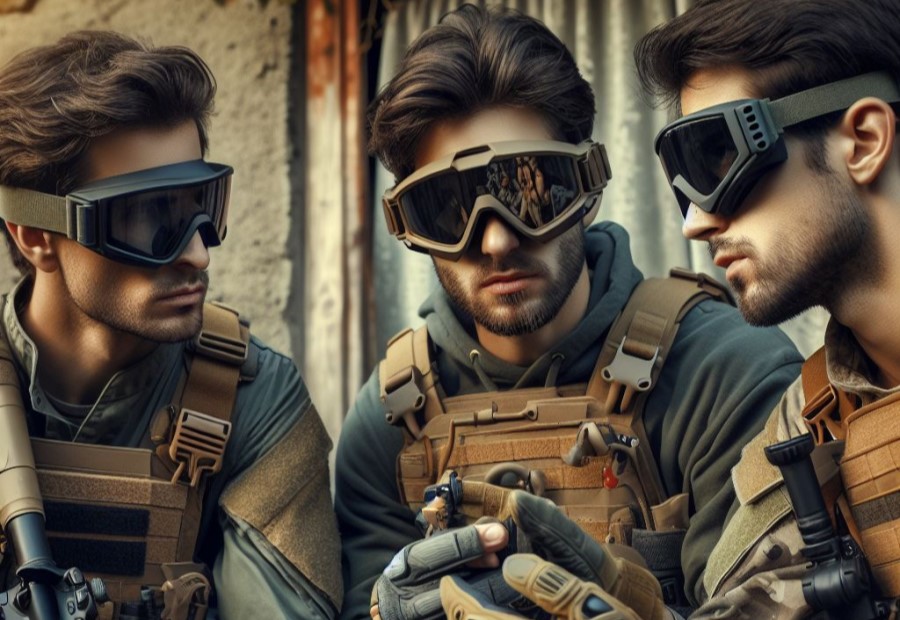
Determine Game Format and Objectives
When planning an airsoft game, it is important to determine the game format and objectives to ensure a fun and organized experience. Here are the steps to follow:
- Determine the game format: Consider options such as team deathmatch, capture the flag, or objective-based scenarios.
- Define the objectives: Decide what players need to accomplish to win the game. This could involve capturing specific points, eliminating all opponents, or completing certain tasks.
- Set game duration: Establish the duration of the game, whether it’s a specific time limit or until certain objectives are achieved.
- Establish game boundaries: Set the boundaries within which the game will be played to ensure safety and fair play.
- Create balance: Ensure that the objectives and teams are designed to create an equal challenge for all participants. Take into consideration factors like team size, equipment limitations, or role assignments.
By following these steps, you can determine the game format and objectives for an exciting airsoft game. Remember to communicate the rules and objectives clearly to all participants beforehand to enhance their experience.
Selecting a Suitable Game Location
When choosing a fitting game location for an airsoft game, there are several aspects to take into account. Firstly, the area must offer sufficient space to accommodate the number of players and allow for easy movement and tactical maneuvering.
Secondly, the terrain should be varied, with a combination of open spaces, buildings, and natural obstacles to create an engaging and dynamic playing environment.
Additionally, it is important for the location to have good visibility and lighting conditions, catering to both day and night games.
Another critical factor is the implementation of safety measures, including boundaries and designated firing zones, to ensure the well-being of all participants.
Lastly, access to amenities like restrooms and water sources is crucial for the comfort and hydration of players during the game.
By considering these factors, organizers can choose a suitable game location that enhances the overall experience and provides an exhilarating and authentic airsoft gameplay environment.
Establishing Game Rules and Safety Guidelines
When it comes to organizing an airsoft game, it is vital to prioritize safety and fair play by establishing game rules and safety guidelines. Here are some important factors to consider:
- Clearly define boundaries: It is essential to establish the boundaries of the game area to prevent players from entering unauthorized areas.
- Set FPS limits: To prevent injuries, specify the maximum velocity allowed for airsoft guns. For instance, keeping the FPS at 400 or below.
- Make safety gear mandatory: To protect players from potential injuries, enforce the use of essential safety gear like goggles, face masks, and gloves.
- Prohibit blind firing: Players must not fire their airsoft guns without having a clear line of sight to their target.
- Implement a medic system: Introduce a system where injured players can be revived instead of being eliminated from the game, adding dynamism to gameplay.
- Prevent close quarters shooting: Set a minimum engagement distance to prevent players from shooting at extremely close range, thus avoiding harm to others.
- Designate a safe zone: Allocate a safe zone where players can relax, store their equipment, and resolve any conflicts that may arise during the game.
- Strictly prohibit gun alterations: Any modifications or adjustments to airsoft guns that may increase their power beyond the specified limits should be strictly prohibited.
When establishing game rules and safety guidelines for an airsoft game, it is crucial to prioritize player safety and fair play.
Remember to communicate the rules clearly to all participants before the game begins and encourage open dialogue to address any concerns or questions. By implementing these guidelines, you can ensure a fun and safe airsoft experience for everyone involved.
Creating Teams and Assigning Roles
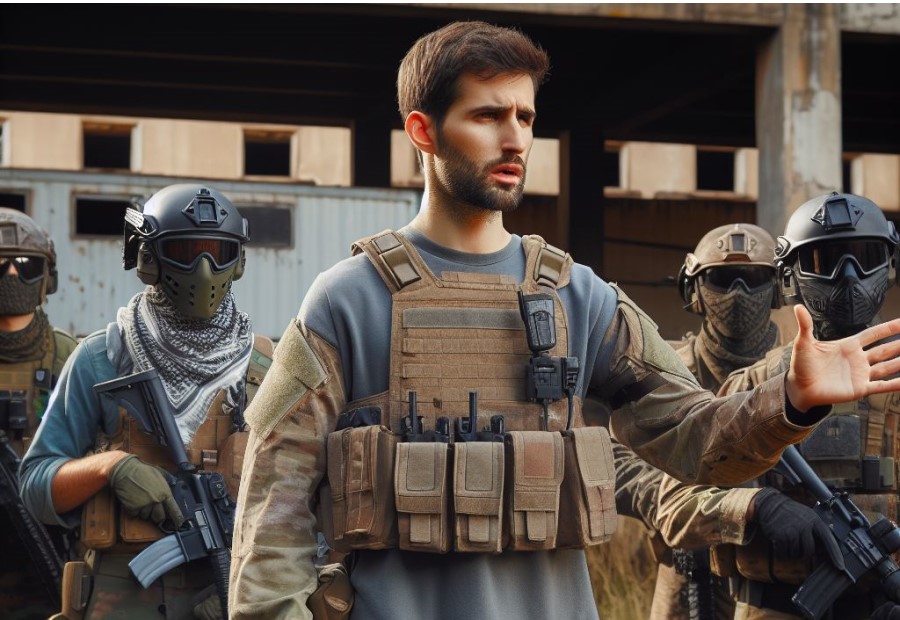
Choosing Team Sizes
Choosing team sizes is a crucial aspect of planning an airsoft game. When determining the appropriate team sizes, it is important to consider the following factors:
1. Game objectives: Take into account the objectives of the game. If the goal is to complete a specific mission or task, smaller team sizes can foster strategic planning and coordination. Conversely, for a large-scale battle, larger team sizes may be more suitable.
2. Game location: The size and layout of the playing area can influence team sizes. A smaller playing area may require smaller teams to ensure fair gameplay and a competitive atmosphere. On the contrary, a larger playing area can accommodate larger teams for more intense battles.
3. Number of participants: Consider the available number of participants for the game. If you have a small group, smaller team sizes may be necessary to ensure everyone can actively participate and contribute effectively. With a larger group, you have the flexibility to form bigger teams.
4. Skill levels: Take into account the skill levels of the players. If the participants have varying levels of experience or skill, it may be beneficial to balance the teams by mixing experienced and less experienced players together.
Remember, the team sizes should be balanced to create a challenging and enjoyable experience for all participants. Adapt the team sizes based on the specific requirements and dynamics of each airsoft game.
Assigning Roles
Assigning roles in an airsoft game is vital for the creation of a balanced and strategic gameplay experience. Here are the steps to effectively assign roles:
- Comprehend the game format and objectives: Familiarize yourself with the specific game rules and objectives to determine the roles needed.
- Evaluate team sizes: Determine the number of players on each team to allocate roles accordingly.
- Identify necessary roles: Identify the different roles required for the game, such as assault, support, sniper, or medic.
- Evaluate player skills and preferences: Take into consideration the skills and preferences of each player to assign roles that suit their strengths.
- Communicate and discuss roles: Clearly communicate the roles to the players and ensure everyone understands their responsibilities.
- Achieve balance and diversity: Strive for a balanced team composition by including a mix of different roles to cover various tactical aspects of the game.
- Make adjustments based on player experience: Consider the experience level of players and make role adjustments if necessary.
- Promote teamwork and coordination: Emphasize the importance of teamwork and coordination within roles to achieve game objectives.
- Periodic role rotation: Consider implementing periodic role rotations to provide players with a chance to experience different roles and gain a well-rounded understanding of the game.
By following these steps, you can ensure that roles are assigned effectively, creating an engaging and dynamic airsoft game experience for all participants.
Preparing and Organizing Equipment
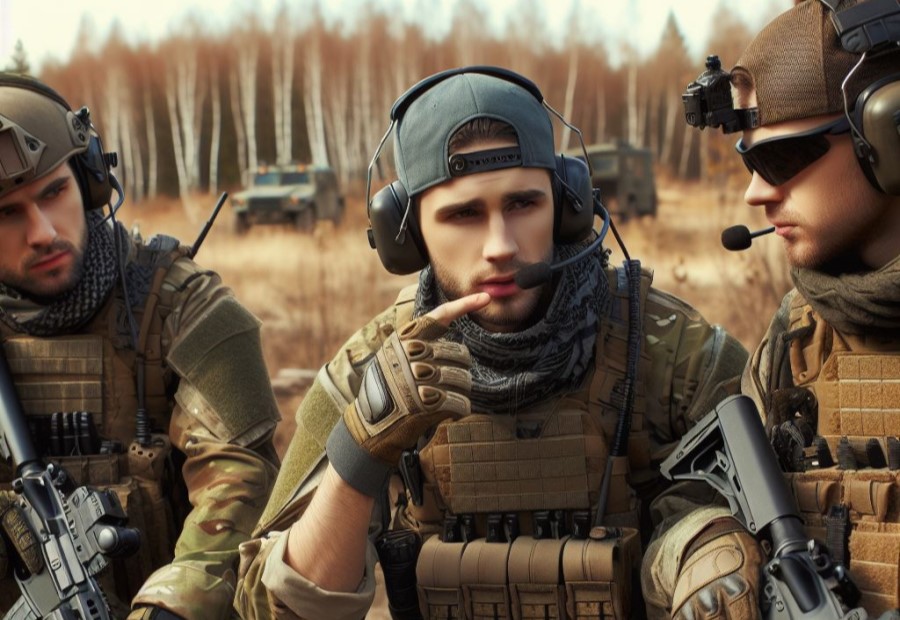
Gathering Airsoft Guns and Ammunition
When planning an airsoft game, it is essential to gather the necessary airsoft guns and ammunition. Here are some steps to consider:
- Assess the number of participants: Determine the number of players and the type of airsoft guns and ammunition they prefer.
- Gun Selection: Choose appropriate airsoft guns based on participants’ skill levels, considering factors such as power source (spring, gas, electric) and adherence to safety standards.
- Ammunition: Use only approved airsoft BBs, considering factors such as weight and, if applicable, opt for biodegradable options. Communicate and enforce ammunition limits for fair play.
- Gun Inspection: Thoroughly inspect airsoft guns before the game to identify and address any damage or malfunctions.
- Velocity Limits: Enforce velocity limits using a chronograph to measure BB speed, ensuring it stays within safe ranges.
- Secure Transportation: Transport airsoft guns securely in designated cases, adhering to local transportation laws.
These key steps ensure the safe and responsible use of airsoft guns and ammunition in the planning and execution of an airsoft game.
Ensuring Adequate Safety Gear
When planning an airsoft game, it is essential to prioritize ensuring adequate safety gear for all participants.
This not only protects them but also minimizes the risk of injuries. Here are some key considerations to keep in mind when it comes to ensuring adequate safety gear:
- Protective clothing: It is crucial that participants wear appropriate protective clothing, including long-sleeved shirts, pants, and sturdy boots. This clothing helps safeguard against scrapes, cuts, and other potential injuries.
- Eye protection: To prevent eye injuries from BB pellets, all participants must wear safety goggles or glasses that meet the necessary standards throughout the entire game.
- Face protection: It is highly recommended to wear a face mask or full-face helmet to shield the face, teeth, and ears from direct hits.
- Head protection: Participants should consider wearing a helmet or headgear to provide additional protection against head injuries that may result from falls or impacts.
- Gloves: Wearing gloves is essential as they protect the hands and fingers from injuries while handling airsoft guns or engaging in physical activities.
- Knee and elbow pads: These pads offer cushioning and protection for joints during movements and prone positions, minimizing the risk of injuries.
Remember, organizing and participating in airsoft games should always prioritize safety. Make sure all participants understand the importance of wearing proper safety gear and provide guidance on where to find high-quality gear.
Strictly enforcing safety practices throughout the game is crucial to prevent accidents and injuries.
Organizing Communication Devices
When organizing communication devices for an airsoft game, it is crucial to ensure efficient and effective communication among team members. Here are some steps to help you effectively organize communication devices:
- Choose reliable communication devices that have a good range and clear sound quality. Walkie-talkies or two-way radios are commonly utilized in airsoft games for this purpose.
- Assign a designated member of each team to carry the communication device. This person will be responsible for relaying crucial information to their team members promptly and accurately.
- Ensure that you have spare batteries or a charging station readily available to guarantee that the communication devices remain operational throughout the entire game.
- Prior to the commencement of the game, conduct thorough testing of the communication devices to ensure that they are functioning correctly. This will help identify and resolve any potential issues before they impact gameplay.
- Establish well-defined communication protocols, such as designated channels or codes, to minimize confusion and ensure smooth and efficient communication during the game.
Pro-tip: It is vital to establish clear communication strategies and engage in practice sessions with the devices before the game.
Effective communication can significantly enhance coordination and teamwork, providing your team with a valuable advantage in the airsoft game.
Developing Game Scenarios and Objectives
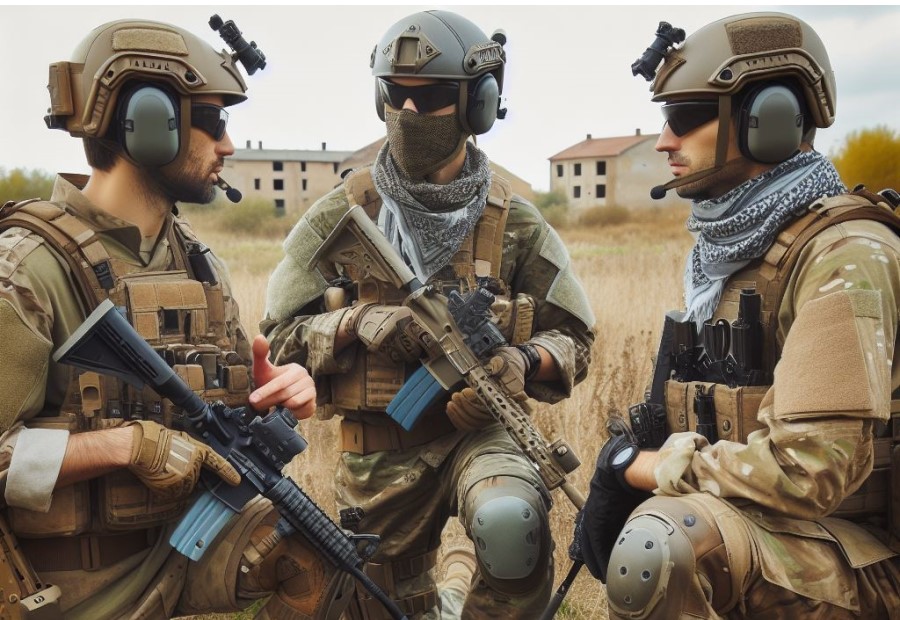
Setting Game Timeframe
To effectively plan an airsoft game, it is vital to set a game timeframe. This crucial step ensures the smooth running of the game and provides clarity on its duration to all participants. Here are the steps to setting the game timeframe:
- Consider the size and complexity of the game: Depending on the scale and objectives of the game, it is important to determine the appropriate duration. For a simple skirmish, a timeframe of 30 minutes to an hour can be sufficient. For larger, more elaborate scenarios, it is advisable to consider a timeframe of several hours.
- Take into account the participants’ availability: It is crucial to consider the schedules of the players involved. Select a time period that accommodates everyone and allows for adequate gameplay.
- Factor in breaks or rest intervals: Depending on the intensity of the game, it may be necessary to incorporate short breaks or rest intervals to prioritize the safety and well-being of the participants. This becomes particularly important for longer games.
- Communicate the game timeframe clearly: Once the game timeframe has been determined, it is essential to effectively communicate it to all participants. This can be done during the safety briefing or through written instructions.
Setting a game timeframe is a fundamental aspect of planning and executing a successful airsoft game. It enables proper organization, ensures fairness, and aids participants in managing their time effectively.
By considering the size and complexity of the game, the availability of participants, and incorporating adequate breaks, you can create an enjoyable and engaging airsoft experience.
Creating Mission Objectives
When creating mission objectives for an airsoft game, it is crucial to follow a systematic approach to ensure an engaging and challenging experience for the participants.
- Identify game theme: In order to create mission objectives, it is important to first determine the overall theme or scenario for the game. This could include a military operation, hostage rescue, or capture the flag.
- Define goals: When creating mission objectives, it is essential to clearly define the objectives that each team needs to achieve in order to win the game. This could involve capturing specific points on the field, retrieving an item, or eliminating a designated target.
- Create balanced challenges: A key aspect of creating mission objectives is ensuring that they provide balanced challenges for both teams. This involves considering factors such as the difficulty level, time constraints, and available resources.
- Include variety: To keep the game interesting, it is important to incorporate a variety of mission objectives. This can include objectives that require teamwork, stealth, strategy, or physical endurance.
- Ensure safety: While creating mission objectives, the safety of the participants should always be prioritized. It is important to avoid objectives that could lead to dangerous situations or accidents.
- Consider player experience: When creating mission objectives, it is crucial to take into account the skill level and experience of the players. This involves providing options for both beginners and advanced players to contribute to the game.
- Review and revise: Before finalizing the mission objectives, it is important to carefully review them to ensure they align with the game theme and goals. Any necessary revisions should be made to enhance the gameplay.
In a similar vein, the history of airsoft dates back to the 1970s when Japanese firearms enthusiasts developed the sport as a safe alternative to traditional shooting sports.
Originally utilizing metal BBs propelled by compressed gas, airsoft guns quickly gained popularity worldwide.
Today, airsoft has evolved into a highly tactical and realistic sport, with players engaging in thrilling simulated combat scenarios while adhering to strict safety guidelines and principles of fair play.
Its roots in military simulation and strategic gameplay make airsoft a favorite among enthusiasts seeking immersive and adrenaline-pumping experiences.
Incorporating Strategic Challenges
Incorporating strategic challenges is an essential element when planning an airsoft game. The inclusion of these challenges not only adds complexity but also excitement to the gameplay.
It requires players to think tactically, make quick decisions, and adapt to ever-changing situations.
To incorporate strategic challenges effectively, game organizers can design scenarios that necessitate players to accomplish specific objectives within a limited timeframe.
These objectives may involve capturing and securing strategic locations, rescuing hostages, or retrieving significant items. By setting clear goals, players are motivated to strategize and coordinate their efforts to achieve success.
Moreover, strategic challenges can be further enhanced by introducing elements such as limited ammunition, restricted movements, or uneven team compositions.
These factors compel players to critically analyze their resources, communication strategies, and teamwork.
Furthermore, varying terrain and weather conditions also contribute to the strategic challenges. Different terrains may require players to adapt their movements and tactics accordingly.
Consequently, quick decision-making and effective communication become crucial in these scenarios.
By incorporating strategic challenges, airsoft games become more engaging and immersive. Players are encouraged to think strategically, communicate effectively, and work together as a cohesive team.
This additional layer of excitement and realism creates an unforgettable experience for all participants.
Conducting Safety Briefings and Rules Review
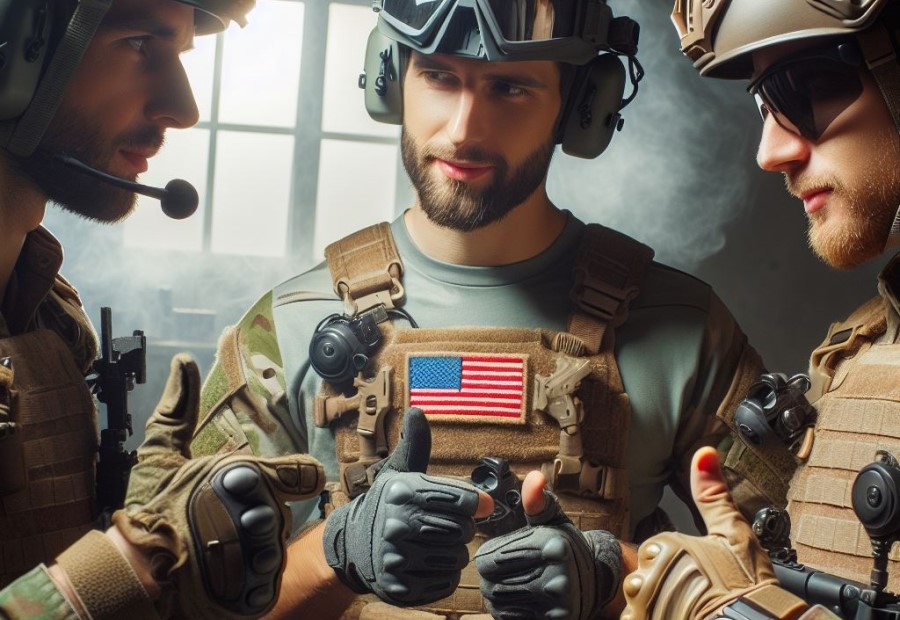
Conducting safety briefings and rules review is of utmost importance when it comes to ensuring a safe and enjoyable airsoft game. Here are the key aspects to consider:
- Choose a suitable location: Prior to conducting the safety briefing, it is essential to make sure that the playing area is free from any potential hazards, such as uneven terrain or obstacles.
- Explain safety protocols: It is crucial to clearly communicate the safety rules, with a special emphasis on the proper use of protective gear, such as eye and face protection. Emphasize that these measures are vital in order to prevent injuries.
- Review game rules and objectives: Go over the game rules, objectives, and any specific scenarios or missions that will be played. It is important to ensure that all participants understand the boundaries, gameplay rules, and any restrictions that may be in place.
- Address weapon and equipment handling: Place significant emphasis on the proper handling and use of airsoft guns, including the rules for keeping them on safe mode when not actively participating in the game. Discuss how to safely reload and handle equipment, such as grenades or smoke devices.
- Ensure communication and emergency procedures: Explain the importance of clear communication between players and establish a system for signaling injuries or emergencies. Designate a specific area or person for medical assistance and discuss appropriate responses to emergency situations.
- Q&A and confirmation: Encourage participants to ask questions and clarify any doubts they may have regarding the safety rules or game procedures. It is crucial to confirm that each player understands and agrees to adhere to the rules before the game commences.
Executing the Airsoft Game
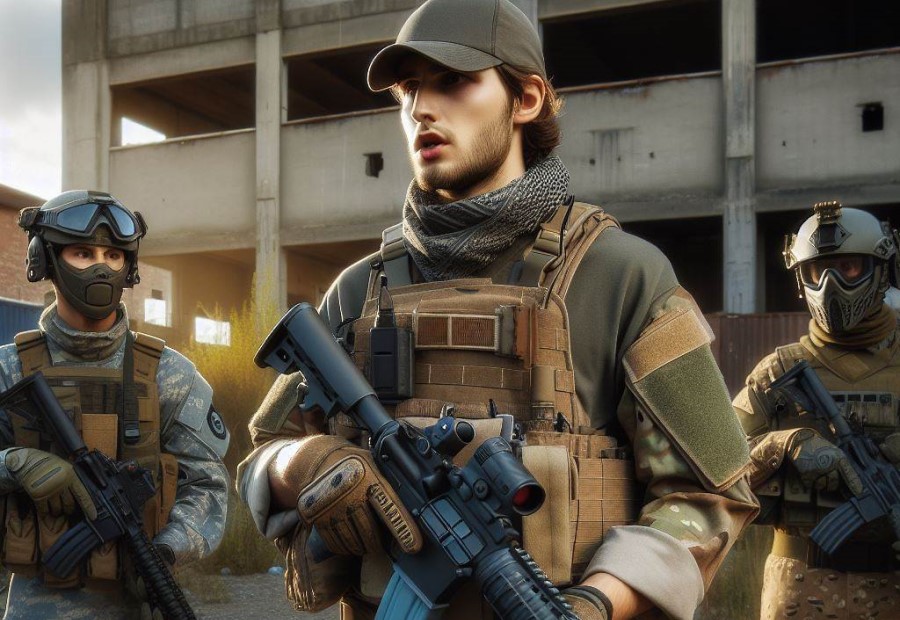
Implementing Game Plans
Implementing game plans is crucial for achieving success in the airsoft game. To ensure a smooth gameplay experience, follow these steps:
- Choose a game plan that aligns with the selected game format and objectives.
- Assign specific roles to each team member, such as sniper, assault, or support.
- Effectively communicate the game plan to the entire team, emphasizing objectives and strategies.
- Ensure that each team member comprehends their individual tasks and responsibilities.
- Collaborate with teammates to develop a well-coordinated approach for attacking or defending.
- Establish communication protocols to effectively relay important information during the game.
- Precisely execute the game plan while remaining adaptable to changing circumstances.
- Review and analyze the effectiveness of the game plan upon the completion of the game.
- Identify areas for improvement and make necessary adjustments to future game plans.
Implementing game plans necessitates teamwork, coordination, and adaptability. By following these steps, your team will increase its chances of achieving success in the airsoft game.
Debriefing and Evaluating the Game
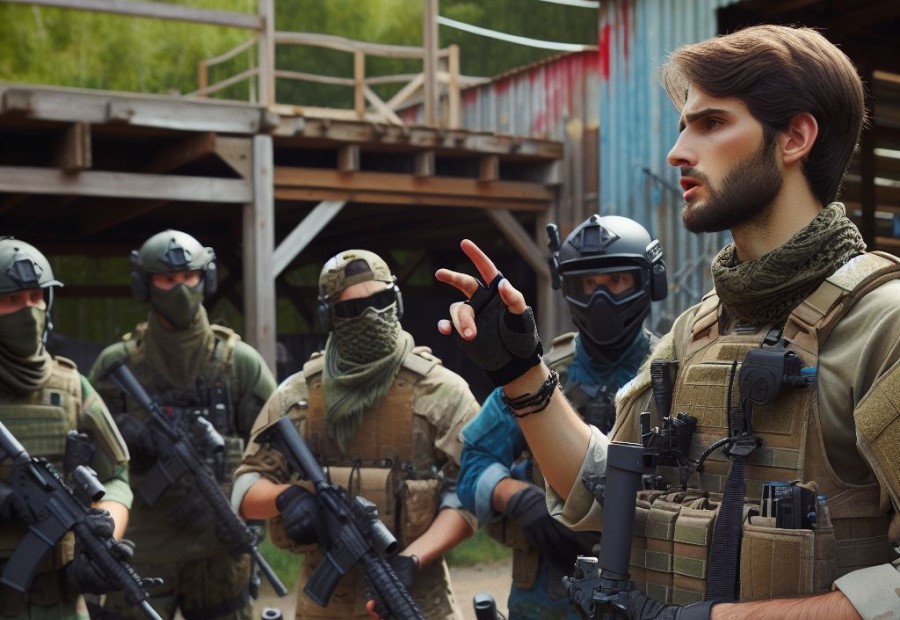
Reviewing Performance and Tactics
- Reviewing individual and team performance: After the airsoft game, it is crucial to assess and evaluate the performance of both individuals and teams. This allows for a better understanding of strengths and weaknesses.
- Analyze tactics used: Evaluate the effectiveness of the tactics employed during the game. Determine if they successfully achieved the desired objectives and if there were any adjustments that could have been made.
- Identify areas of improvement: Recognize specific areas where performance and tactics can be enhanced. This could include communication, teamwork, decision-making, or individual skills.
- Recognize successful strategies: Acknowledge and highlight strategies that proved successful during the game. This promotes learning and encourages players to continue implementing effective tactics.
- Provide constructive feedback: Offer constructive feedback to players based on their performance and tactics. This helps them understand areas for improvement and encourages growth.
- Adjust future game plans: Utilize the insights gained from reviewing performance and tactics to make adjustments to future game plans. This ensures that the game becomes more challenging and engaging for participants.
- Encourage self-reflection: Promote self-reflection among players by asking them to assess their own performance and tactics. This encourages personal growth and development.
Collecting Feedback from Participants
Collecting feedback from participants is an essential part of planning an airsoft game. It provides valuable insights and helps improve future game experiences. Here are some effective ways to collect feedback:
- Post-game surveys: Distribute surveys to participants after the game to gather their feedback. Ask about their overall experience, satisfaction with the game format, rules, and safety measures.
- Structured interviews: Conduct interviews with participants to gain more in-depth feedback. Ask specific questions about their favorite aspects of the game, areas for improvement, and any suggestions they may have.
- Discussion groups: Organize small group discussions with participants to encourage open and candid conversations about their thoughts and experiences during the game.
- Observations: While participants are engaged in the game, observe their reactions, interactions, and overall engagement. Take note of any areas where participants may have encountered challenges or expressed dissatisfaction.
- Social media and online reviews: Encourage participants to share their feedback on social media platforms or leave reviews on relevant online platforms. Monitor these channels to gather feedback and address any concerns.
Gathering feedback from participants helps organizers gain valuable insights into their game planning process.
It enables them to address areas of improvement, enhance player satisfaction, and cultivate a more enjoyable airsoft gaming experience for future participants.
Tip: Did you know that incorporating feedback from participants can boost player engagement and loyalty, ultimately enhancing the overall success of your airsoft games?
Frequently Asked Questions
Where is a good place to play an airsoft game?
A good place to play an airsoft game would be a specialized airsoft field. These fields are specifically designed for airsoft games and provide appropriate terrain, cover, and safety regulations for an optimal gaming experience.
Can I use public land for an airsoft game?
It is generally not recommended to use public land for an airsoft game. Using public land may be illegal or against local regulations.
It’s essential to obtain permission from the property owner and ensure that all safety measures are in place before conducting any airsoft activities.
What are some important considerations for choosing the right clothes for an airsoft game?
When choosing clothes for an airsoft game, it is important to consider the weather forecast and type of game. Dress in layers for comfort, use moisture-wicking sports clothes, and wear appropriate camouflage based on the location.
Additionally, choose clothing that allows for ease of movement and provides adequate protection.
What type of game should I plan for an airsoft event?
The type of game you plan for an airsoft event depends on the preferences and skill levels of the players involved. Common game types include team deathmatch, capture the flag, and objective-based scenarios.
Consider the size of the playing area, the number of participants, and the desired level of intensity when planning a game.
Do I need a special license or permit to organize an airsoft game?
The requirements for licenses or permits to organize an airsoft game may vary depending on your location. It is important to research and comply with any local regulations or permits necessary to ensure the event is legal and safe.
Consult with local authorities or event planning professionals for guidance.
Can I use a cheap gun for an airsoft game?
While it is possible to use a cheap gun for an airsoft game, it is generally recommended to invest in a quality airsoft replica. Cheap guns may not offer the same level of durability, accuracy, and performance as higher-end options.
It is important to consider the reliability and safety features of the gun to ensure an enjoyable and safe gaming experience.

